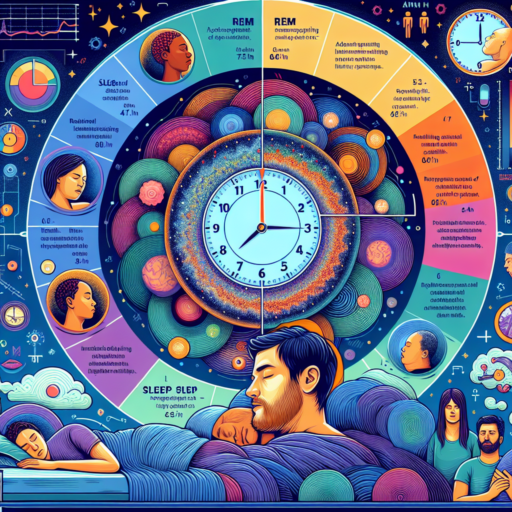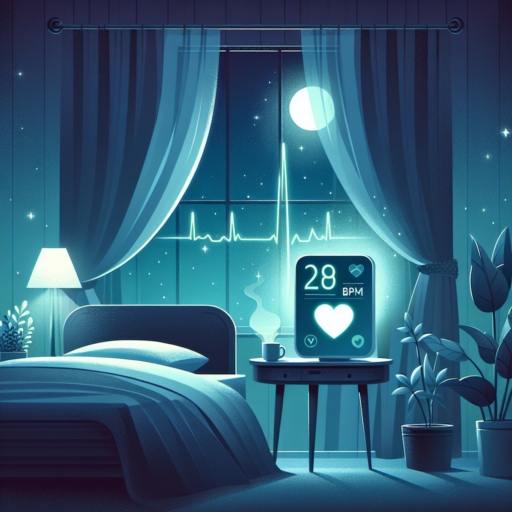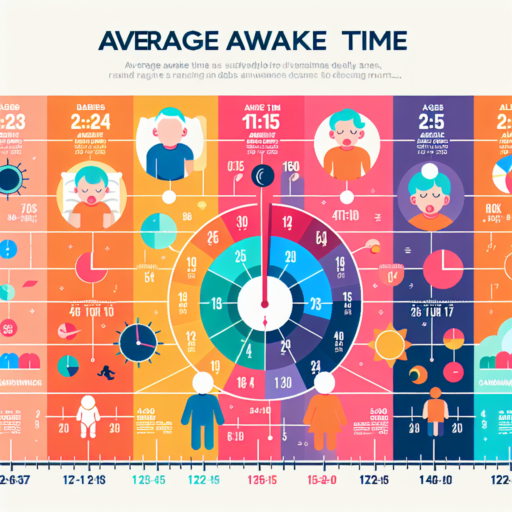What Is REM Sleep and Why Does It Matter?
REM sleep, or Rapid Eye Movement sleep, is a crucial component of our nightly rest cycle, characterized by quick movements of the eyes beneath closed eyelids. It’s distinguished from other stages of sleep by its intense brain activity, resembling that of being awake. This phase is where the most vivid dreams occur, but REM sleep’s significance extends far beyond dreaming.
The importance of REM sleep cannot be overstated, as it plays a key role in emotional regulation and memory consolidation. During this stage, the brain processes experiences from the day, converting them into long-term memories and learning. This is why after a night of insufficient REM sleep, individuals may find it harder to concentrate or remember new information. It’s as if this stage of sleep acts as a brain «reset,» preparing you for the next day.
Furthermore, REM sleep has been linked to creativity and problem-solving abilities. The unique brain activity during REM sleep fosters an environment where the brain can make novel connections between unrelated ideas, often leading to «eureka» moments upon waking. This aspect underscores the critical nature of REM sleep in cognitive functions, illustrating why prioritizing sleep quality is essential for overall mental health and productivity.
Understanding the Average REM Sleep Time for Adults
The concept of REM (Rapid Eye Movement) sleep is crucial in understanding the overall sleep quality that adults experience. During REM sleep, our brains are almost as active as they are when we are awake. This phase is essential for emotional regulation, memory consolidation, and facilitating learning. As adults navigate through the complexities of life, understanding the average amount of REM sleep needed can provide insights into improving mental health and cognitive abilities.
Typically, experts suggest that adults should aim for approximately 20-25% of their total sleep time to be composed of REM sleep. In an ideal scenario, where an adult gets around 7 to 9 hours of sleep per night, this translates to roughly 90 to 120 minutes of REM sleep. This period allows the brain to process and refresh effectively. However, the distribution of REM sleep can vary significantly from person to person and night to night, influenced by factors such as age, lifestyle, and health conditions.
It’s interesting to note that the cycle of REM sleep occurs in intervals throughout the night, with the first phase appearing about 90 minutes after falling asleep. As the night progresses, these REM periods become longer, especially during the second half of the sleep cycle. This distribution underscores the importance of not only total sleep duration but also uninterrupted sleep to allow for the full benefits of REM phases.
How Much REM Sleep Do You Really Need?
The question of how much REM sleep one really needs is pivotal for understanding overall sleep health. REM sleep, or Rapid Eye Movement sleep, is the period during which most dreaming occurs. It is essential for cognitive functions such as memory, learning, and emotional regulation. While individual sleep requirements can vary, the general consensus is that REM sleep should constitute approximately 20-25% of an adult’s total sleep cycle.
Factors influencing REM sleep needs can include age, stress levels, and overall health. For example, newborns spend about 50% of their sleep in the REM stage, reflecting the critical role this phase plays in brain development. Adults, on the other hand, might see a decrease in REM sleep as they age, but the quality and the need for cognitive restoration remain high. Understanding these dynamics is crucial for optimizing sleep patterns and ensuring the body and mind are rejuvenated effectively.
To gauge whether you are getting enough REM sleep, it is helpful to look at your sleep patterns over a consistent period. Tools like sleep trackers can provide insights into your sleep stages, including REM. However, focusing on overall sleep quality and duration is also important, as these factors are interconnected with the amount of REM sleep you achieve each night. Ensuring a conducive sleep environment and following good sleep hygiene practices can enhance your REM sleep quality, promoting better health and well-being.
The Science Behind REM Sleep: Functions and Importance
Rapid Eye Movement (REM) sleep is a fascinating and complex phase of our sleep cycle, renowned for its critical role in various physiological and psychological functions. This unique stage of sleep, distinguishable by its rapid eye movements and almost paradoxical nature of being a deeply restful yet mentally active phase, remains a subject of scientific interest and investigation.
Functions of REM Sleep
One of the primary functions of REM sleep is its contribution to brain development and cognitive processes. During REM, the brain is highly active, processing and consolidating memories from the day. This stage is crucial for learning, memory formation, and problem-solving abilities. Moreover, REM sleep is thought to be involved in the regulation of mood, playing a vital role in our emotional resilience and mental health.
Importance of REM Sleep
The importance of REM sleep extends beyond cognitive and emotional benefits. It also has a significant impact on physiological aspects of health. For instance, REM sleep has been linked with the regulation of the immune system, helping to restore and strengthen our body’s defense mechanisms. Additionally, it plays a role in metabolic regulation and has been associated with improved cardiovascular health.
In summary, the science behind REM sleep uncovers its indispensable functions and its profound importance in maintaining overall well-being. Whether it’s enhancing memory, supporting emotional stability, or fostering physical health, REM sleep is integral to a balanced and healthy lifestyle.
Impact of REM Sleep on Health and Cognitive Functions
The role of REM sleep, or Rapid Eye Movement sleep, in maintaining optimal health and cognitive functionality is a topic of increasing interest within the scientific community. This sleep phase, characterized by quick movements of the eyes, plays a crucial role in both the emotional and cognitive processing arenas. Individuals typically cycle through various sleep stages throughout the night, with REM sleep constituting about 20-25% of total sleep in adults. Understanding the impact of this specific stage on health and cognitive functions can enlighten the strategies employed to improve sleep quality.
One of the pivotal aspects of REM sleep is its contribution to memory consolidation. During this stage, the brain appears to be particularly active, processing and consolidating information learned during the day. This is crucial for both memory formation and the enhancement of learning capabilities. Studies have shown a direct correlation between sufficient REM sleep and improved problem-solving skills, creativity, and memory performance. This suggests that any disruption in the REM cycle could potentially impair these cognitive functions, underscoring the importance of quality sleep.
From a health perspective, REM sleep has been linked with emotional regulation and psychological well-being. It aids in the processing of emotions, which is vital for mental health. Lack of sufficient REM sleep has been associated with increased levels of anxiety, stress, and vulnerability to depression. Furthermore, during REM sleep, the body can experience lowered stress hormone levels, suggesting a restorative process for the mind and body that may protect against the harmful effects of stress.
The intricate relationship between REM sleep and our overall health emphasizes the need for further research and awareness. As we unravel more about what happens during this dream stage of sleep, the clearer the connection becomes between good sleep hygiene and our physical, emotional, and mental health.
Factors That Can Affect Your Average REM Sleep Time
Understanding what influences your average REM sleep time is essential for ensuring you’re getting the quality sleep your body needs. Rapid Eye Movement (REM) sleep is a crucial sleep phase, responsible for memory consolidation and mood regulation. Multiple factors can alter its duration, impacting overall health and wellbeing.
Age-Related Changes
One significant factor is age. As individuals grow older, they tend to spend less time in REM sleep. This decrease begins in early adulthood and continues progressively, which means the structure of sleep evolves as one ages. Knowing this can help individuals adjust their sleep habits and expectations about sleep quality over their lifespan.
Lifestyle Choices and Stress Levels
Lifestyle choices also play a critical role in determining REM sleep duration. Consumption of alcohol, caffeine, and certain medications before bedtime can significantly reduce the time spent in this restorative sleep phase. Similarly, stress and anxiety levels have a profound impact, as higher stress can lead to disruptions in the sleep cycle, curtailing the amount of REM sleep one might achieve.
These insights into the factors affecting your average REM sleep time underscore the importance of mindful lifestyle choices and stress management for enhancing sleep quality. Adjusting these factors could be beneficial in achieving a healthier sleep pattern, highlighting the intricate relationship between daily habits and the quality of REM sleep.
Tips to Increase Your REM Sleep for Better Health
Experiencing deep, restful sleep plays a pivotal role in your overall health, with Rapid Eye Movement (REM) sleep being a crucial phase for mental and physical rejuvenation. Improving the quality and duration of your REM sleep can significantly enhance your cognitive function, mood, and ability to manage stress. Here are practical strategies to help you increase your REM sleep for better health.
Create a Sleep-conducive Environment
Optimizing your bedroom environment is essential for encouraging REM sleep. Ensure your bedroom is quiet, cool, and dark. Investing in a comfortable mattress and pillows can also make a significant difference. Utilize white noise machines or earplugs to block out disruptive sounds, and consider using blackout curtains or eye masks to eliminate light. These adjustments can help signal to your body that it’s time to sleep, facilitating an easier transition into REM sleep.
Establish a Consistent Sleep Schedule
Adhering to a regular sleep pattern is vital for enhancing the quality of your REM sleep. Aim to go to bed and wake up at the same times every day, even on weekends. A consistent sleep schedule helps regulate your body’s internal clock, making it easier to fall asleep and wake up naturally. Over time, this consistency can increase the length and quality of your REM sleep, contributing to improved health and well-being.
Mind Your Diet and Exercise
Your daytime habits, including diet and exercise, play a significant role in how well you sleep. Avoid consuming large meals, caffeine, and alcohol close to bedtime, as they can disrupt your sleep cycle and diminish the quality of your REM sleep. Incorporating regular physical activity into your day can also promote better sleep. However, try to avoid vigorous exercise close to bedtime, as it can energize you and make falling asleep more challenging.
Tracking Your REM Sleep: Tools and Techniques
Understanding and monitoring your REM sleep is crucial for assessing sleep quality. REM, or Rapid Eye Movement sleep, is a critical sleep stage when most of our dreaming occurs, and it plays a vital role in learning and memory. Tools and techniques for tracking REM sleep have evolved, allowing individuals to gain insights into their sleep patterns and make informed adjustments for better sleep health.
Wearable Sleep Trackers
One of the most popular methods for monitoring REM sleep is through the use of wearable sleep trackers. These devices, often worn on the wrist or as a headband, employ various sensors to monitor movements, heart rate, and sometimes even brain waves. They provide detailed insights into your sleep cycles, including how much time you spend in REM sleep. Brands like Fitbit, Garmin, and others have refined their technology to offer accuracy close to that of professional sleep studies, making them invaluable tools for anyone looking to improve their sleep quality.
Smartphone Apps
For those who prefer not to wear a device, smartphone apps present another viable option for tracking REM sleep. Utilizing the smartphone’s accelerometer to detect movement in bed, apps like Sleep Cycle analyze sleep patterns and offer reports on sleep stages, including REM. While not as accurate as wearable devices due to the lack of physiological data, these apps still offer useful estimates that can help users identify trends in their sleep patterns.
The selection of the right tool or technique for tracking REM sleep can significantly impact your understanding of your sleep health. As technology continues to advance, the accuracy and features of these tracking methods improve, offering deeper insights into our sleep and how it affects our overall well-being.
Common Myths About REM Sleep Debunked
When it comes to understanding REM (Rapid Eye Movement) sleep, various myths and misconceptions cloud the truth, leading to widespread confusion. REM sleep, a crucial phase of our sleep cycle associated with vivid dreaming, plays a vital role in emotional regulation and memory consolidation. However, the myths surrounding it sometimes obscure its importance and functions.
First and foremost, a prevalent myth is that REM sleep is the deepest phase of sleep. Contrary to this belief, REM sleep is characterized by heightened brain activity, closely mirroring wakefulness, making it quite distinct from the deep, restorative stages of non-REM sleep. This misunderstanding often leads to the misconception that waking up from REM sleep results in better restfulness. Interestingly, abrupt awakenings from REM can leave individuals feeling groggy and disoriented, underscoring the complexity of sleep phases.
Another common misconception is that adults need less REM sleep. Research indicates that REM sleep occupies about 20-25% of an adult’s sleep cycle, a proportion that remains relatively stable throughout adulthood. The reduction in REM sleep primarily occurs in older age, signifying that the need for REM does not diminish with the transition from childhood to adulthood as commonly thought.
Lastly, the myth that skipping REM sleep has no adverse effects is particularly misleading. Omitting REM sleep can have significant ramifications, including impairments in cognitive functions, mood disturbances, and increased stress vulnerability. It highlights the critical role of REM sleep in maintaining overall mental health and well-being, debunking the notion that it can be easily disregarded without consequence.
No se han encontrado productos.
How to Interpret Your Sleep Data for Improved REM Sleep Time
Understanding and interpreting your sleep data is crucial in optimizing your REM sleep time, a critical component of overall sleep quality. Devices and apps that track sleep offer invaluable insights into your sleep patterns, but decoding this information can sometimes be overwhelming. This guide aims to simplify that process, helping you to make informed adjustments to your schedule and environment that could enhance the quality of your REM sleep.
Identifying REM Sleep in Your Data
The first step in interpreting your sleep data is to recognize the segments designated as REM sleep. Typically, these periods are marked with lighter or more active sleep stages in your data. Look for patterns or specific timeframes where REM sleep appears most frequently. Observing these trends over time can reveal when you’re entering REM sleep and how long you’re staying in it. Tracking changes and consistency in REM duration can be a good indicator of sleep quality and the effect of lifestyle adjustments.
Factors Impacting REM Sleep
Several factors can influence the quantity and quality of your REM sleep, such as stress levels, diet, and exercise habits. For example, data might show reduced REM stages following late-night eating or high caffeine consumption. Similarly, stress and anxiety can disrupt the regularity and duration of REM sleep, often leading to fragmented sleep patterns. By correlating lifestyle factors with REM sleep data, you can identify potential sleep disruptors and areas for improvement.
Adjusting for Improved REM Sleep
Upon identifying the patterns and factors affecting your REM sleep, the next step is making targeted adjustments. Ensuring a conducive sleep environment by maintaining a cool, quiet, and dark room can significantly impact sleep quality. Additionally, establishing a consistent sleep routine and limiting screen time before bed are practical changes that can be reflected in improved sleep data over time. Monitoring these adjustments through your sleep tracker can help validate their effectiveness in increasing REM sleep time and, by extension, enhancing overall sleep quality.




